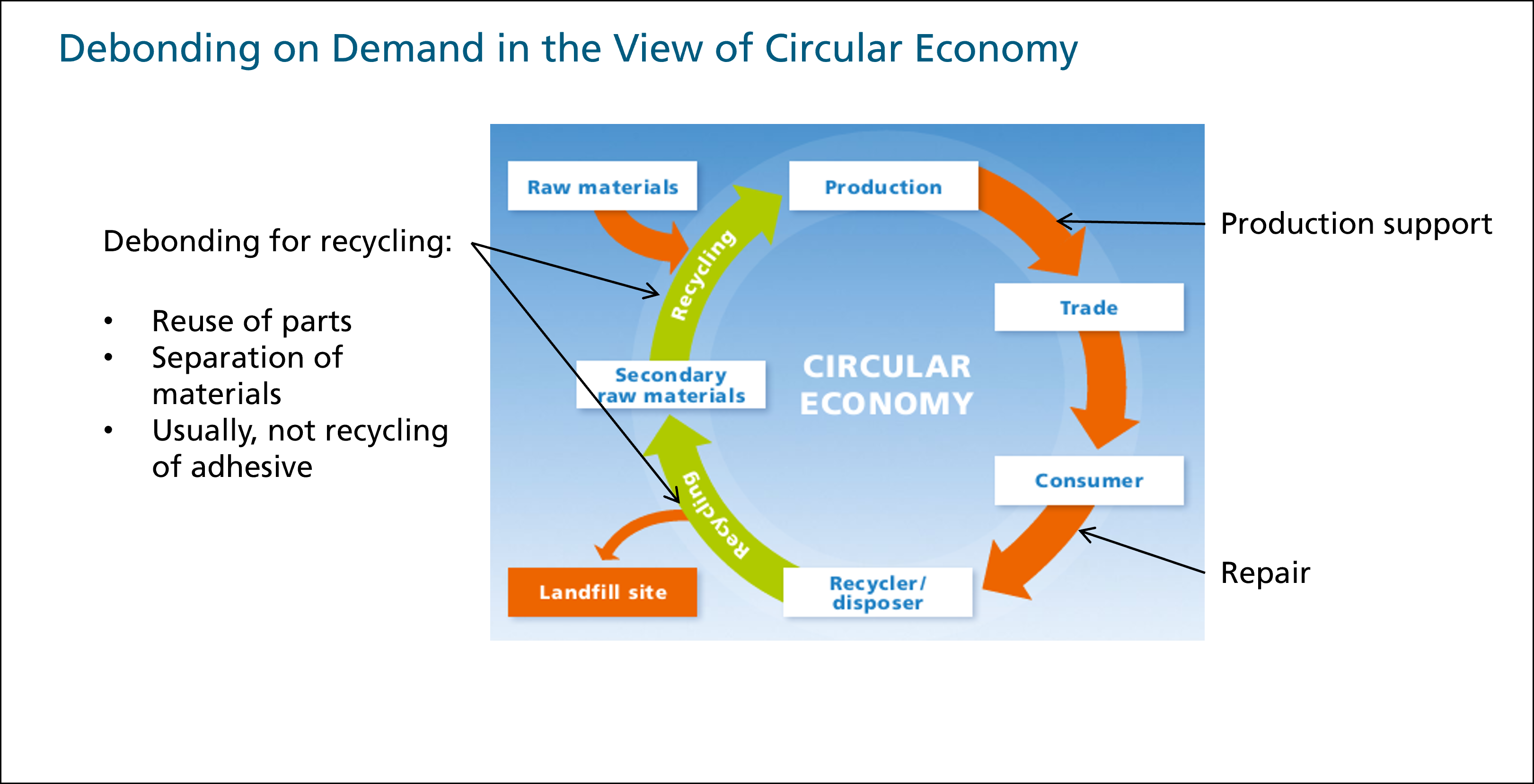As part of the 22nd ‘Bremer Klebtage’, we asked Dr Matthias Popp to answer a few questions about his presentation entitled ‘Debonding On Demand - Many Methods, One Goal’. In our interview, he explains the concepts and challenges behind the topic, discusses the technological and environmental aspects of debonding and provides an insight into future developments in this area.
22nd ‘Bremer Klebtage’: Interview with Dr Matthias Popp about his lecture ‘Debonding On Demand - Many Methods, One Goal’
1. What is behind the title of the lecture you gave at the ‘Bremer Klebtage’?
The lecture dealt with the various possibilities of providing adhesives with ‘debonding properties’. It should become clear that both very simple and very complex measures that involve changing the adhesive polymer can lead to the desired result.
2. What are the biggest technological challenges when implementing debonding mechanisms in practice?
The biggest challenge is to ensure that the reliability of the adhesive is not negatively affected during its life cycle and to convince users and customers of this.
3. What are the environmental benefits of debonding and how does it contribute to sustainability in the industry?
Bonding is a key technology for lightweight construction and energy efficiency. Nevertheless, the separation of recyclable materials and their recycling or reutilisation can also make an important contribution to sustainability. This is currently evident in the footwear industry, for example, where there is great interest in separating polyurethane soles from the rest of the shoe and reusing the polyurethane.
4. What safety aspects need to be taken into account when developing and using adhesives with a debonding function?
The same answer applies here as for question 2: The reliability of the adhesive within the life cycle must not be negatively affected under any circumstances.
5. How do you see future developments in the field of debonding and which new technologies or methods could be pioneering here?
Personally, I suspect that the chemistry of the adhesive will rarely be changed, but that adding particles to the adhesive that can be activated via external triggers (microwave, UV light, ultrasound) will be the most promising way to realise debonding-on-demand in bonded joints.
6. How do you think the main topics of the ‘Bremer Klebtage’ have changed over the years? Are there topics that used to be the focus and are less relevant today or vice versa?
With a wink, you could say that in the past, users had to be convinced of the durability of an adhesive bond and today the opposite is true: ‘debonding on demand’. Without a doubt and in all seriousness, the aspects of sustainability, carbon footprint and circular economy play a much more important role today than they did a few years ago.
